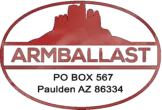Introduced by Marklin in 1972, Z Scale Model Railroad is one of the smallest railway models available commercially (1:220), with a track gauge of 6.5 mm / 0.256 in. Z scale trains operate on 0–10 volts DC and offer the same operating characteristics as all other two-rail, direct-current, analog model railways. Locomotives can be fitted with digital decoders for independent control. Model trains, track, structures, and human/animal figures are readily available. In European, North American, and Japanese styles from a variety of manufacturers.
Use our N Scale for you Z Scale needs

HISTORY
Z scale was introduced in 1972 at the Nuremberg toy fair by German manufacturer Marklin. The letter Z was chosen to represent the new scale. Due to its position as the last letter of the German alphabet. The signaling that there would be no smaller model railway scale commercially available.
Since then, several attempts have been made to introduce smaller scales to the market. But they remain niche products without significant following, the largest known, which is the T gauge (1:450, 3 mm (0.118 in) gauge). Originally running on 8 V DC, track voltage was increased to 10 V DC around the year 2000. Accessory power has always been 10 V AC. In 1978, a Märklin Z scale locomotive pulled six coaches into the Guinness Book of World Records by running nonstop for 1,219 hours and traveling a distance of 720 km (450 mi). The train stopped due to the failure of the motor.
Z scale has become a mature modeling scale. With model locomotives, rolling stock, buildings, signaling, and human and animal figures becoming available in increasing numbers. From an expanding variety of established and particularly smaller, fast-growing manufacturers. In the Z scale, layouts have won local, regional, and national competitions, including the best of the show at the NMRA National Train Show (NTS) in July 2001, in St. Louis, MO.
ADVANTAGES
The Z scale’s small size makes it easy to fit more scale-space into the same physical layout, which would be used by larger-scale models. It can be beneficial to use the Z scale when building very compact train layouts, such as novelty setups in briefcases, guitar cases, or jewelry boxes. Several transportation museums, for instance, have used the Z scale to present real-world railway scenes. Z scale allows longer trains and broader, more realistic curves than is practical in larger scales.
